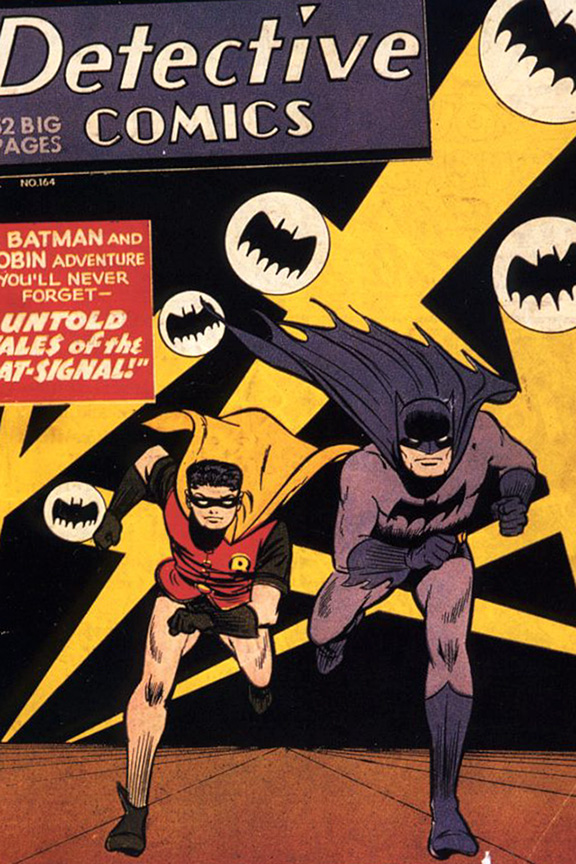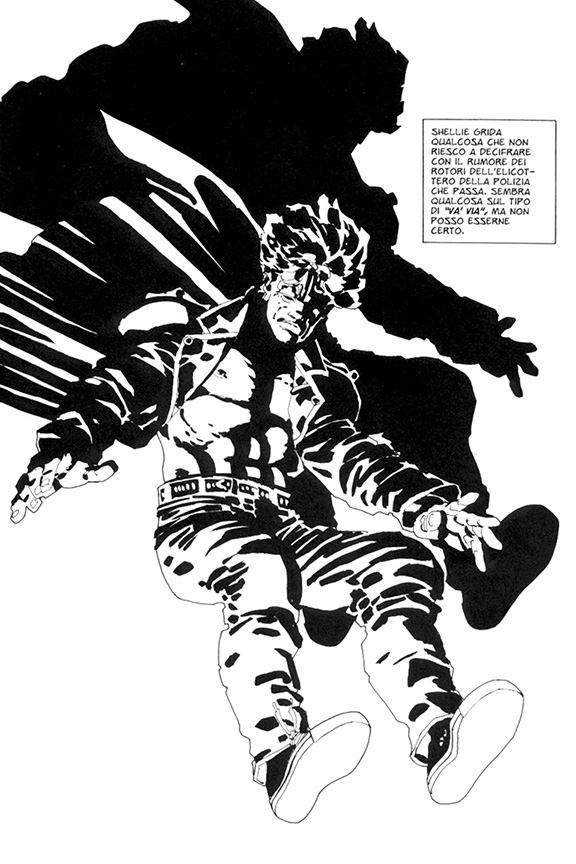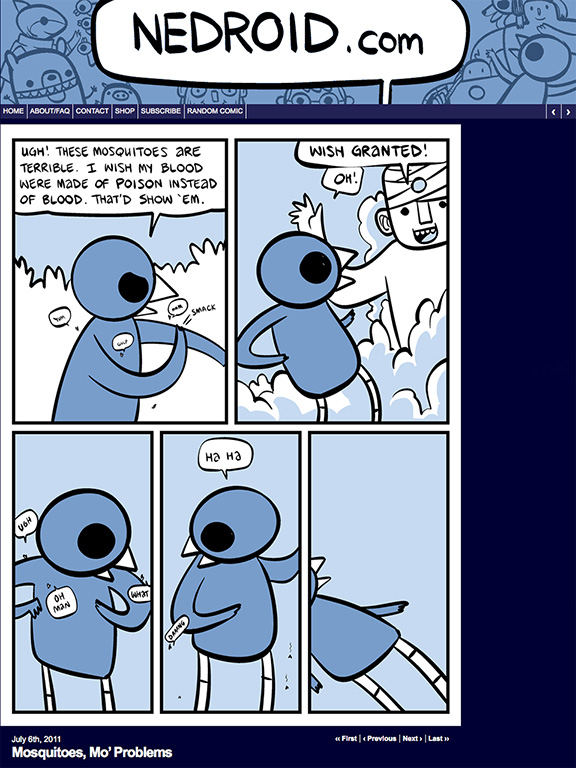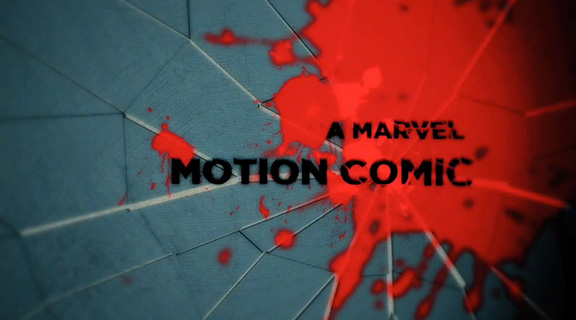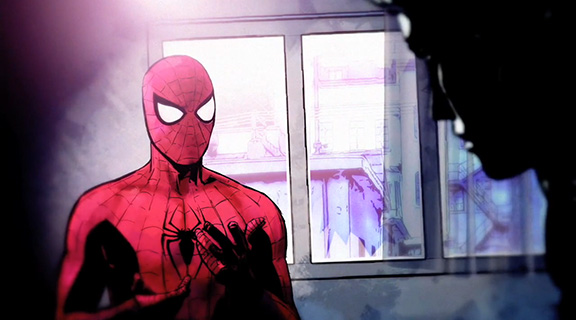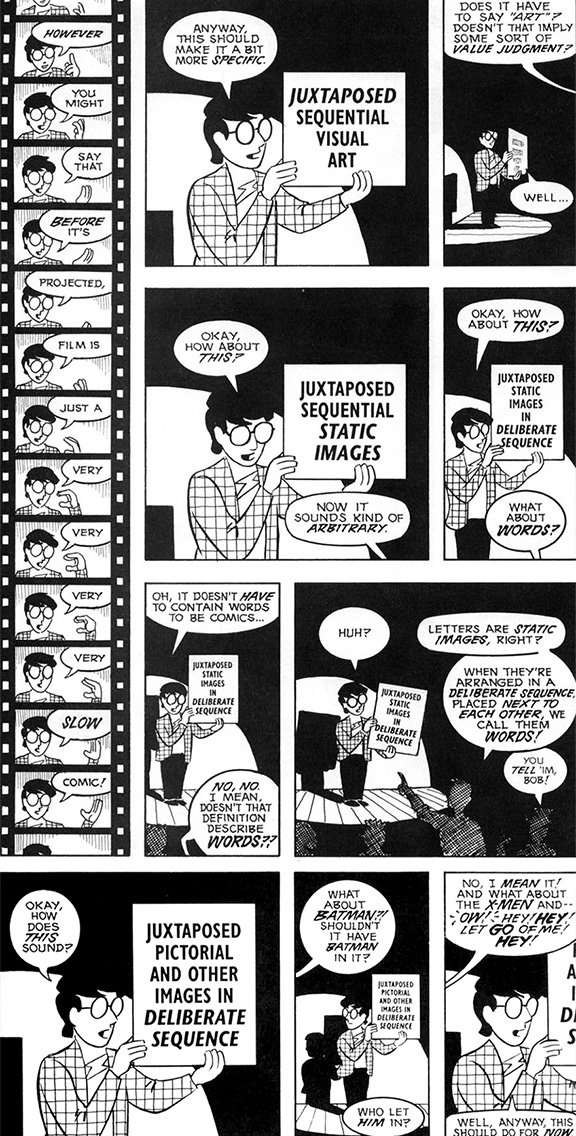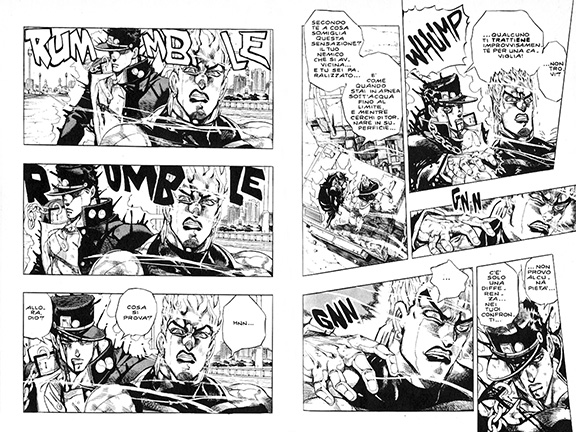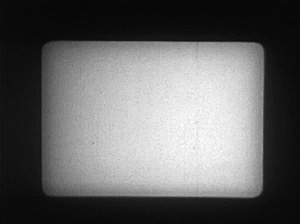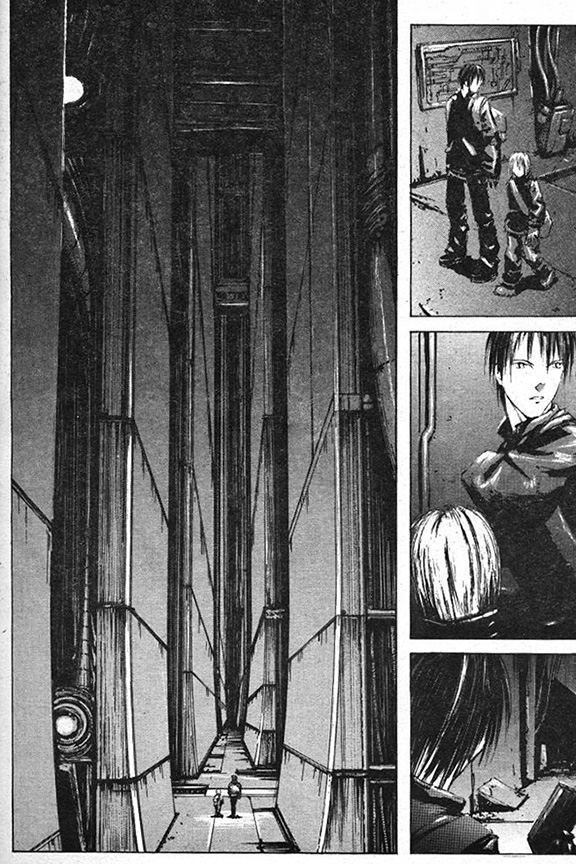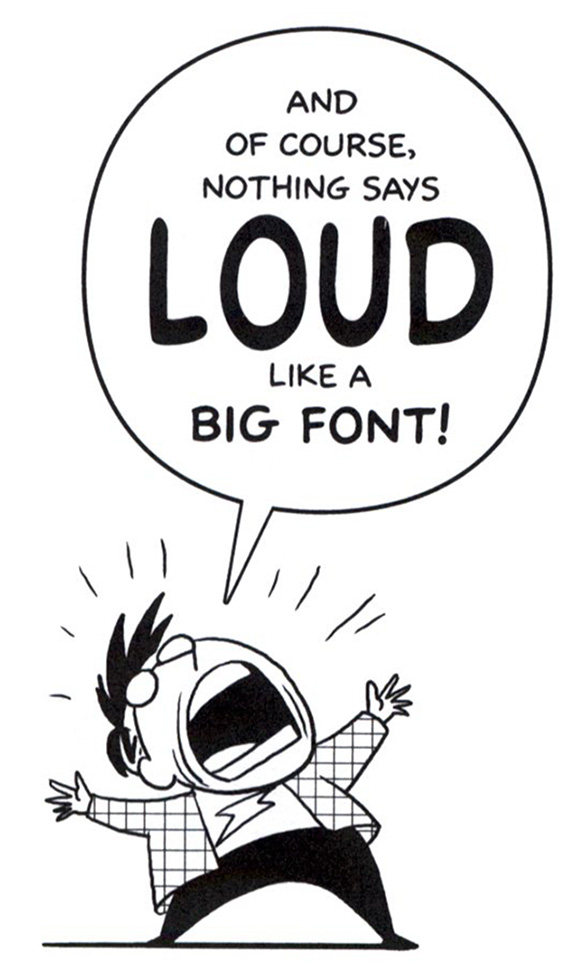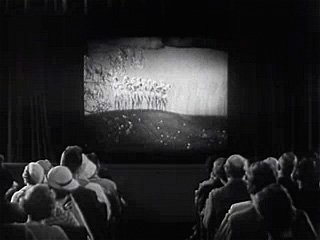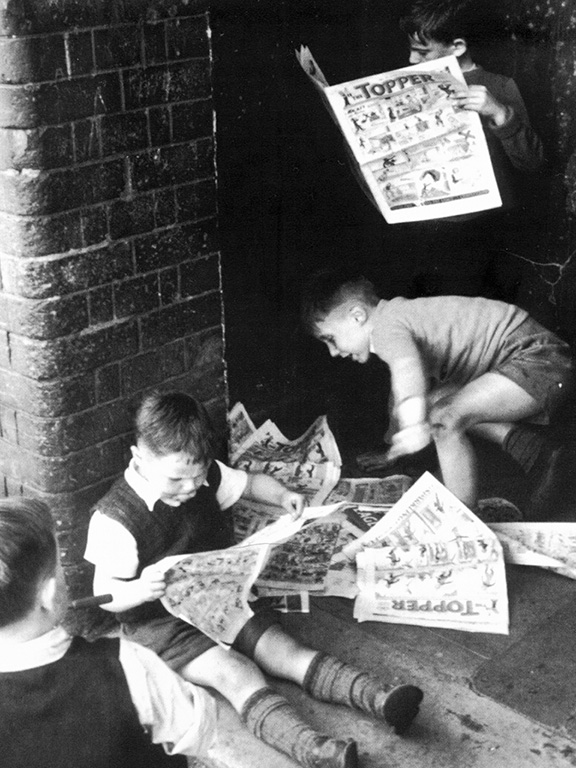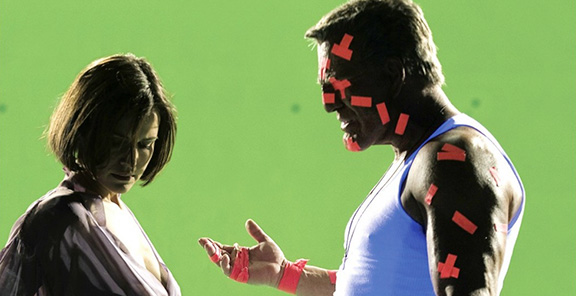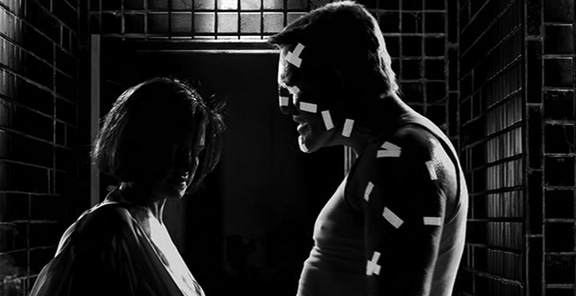Research Hybridization of Cinema and Comics
I was able to work and further refine the concept of Medlay in occasion of my graduate thesis1, which aim was to compare the cinema and comics media forms and formulate a new creative way to crossbreed them on the Web.
Here follows the main reasoning behind my thesis:
Remediation
That of the two media of cinema and comics is a long story of competition and reciprocal remediation2.
The term remediation is not meant to refer to the transposition of contents3 among cinema and comics but instead to the reciprocal borrowing and reshaping of their media forms carried out by both of them.
For example, the 1960s TV series Batman transposed the imagery and characters of the homonymous comic book.
Batman, 1960s TV series
Roger Sabin, Comics, Comix and Graphic Novels — A History Of Comic Art
A practical example of a remediation is the way the movie Sin City — which is a transposition of the homonymous graphic novel — has remediated a typical device of the comics media form, that is the splash page.
Through “splash pages” […] comics have the distinctive potential to convey in purely graphic terms the importance of a (literally) “big” moment in the story.
Greg M. Smith, Shaping The Maxx: adapting the comic book frame to television
Frank Miller, Sin City
Restricted by the film’s seemingly fixed, invisible frame
the movie remediates and reshapes the “splash page” device by means of the camera movement and of the artificial frozen pose adopted by the jumping character.
Robert Rodríguez & Frank Miller, Sin City
Digital Revolution
Before the digital revolution these reciprocal remediations have always been limited by different production, recording, transmission and reproduction technologies.
After the digital revolution, the technological differences between the two cultural forms — taken and included by the World Wide Web — have been reset: in most cases cinema and comics have nonetheless continued to be considered and remediated separately.
Anthony Clark, NEDROID web comic
Is it possible to create a new hybrid media form which integrates those characteristics of cinema and comics that seemed incompatible in the past, now that the two media forms potentially differ only in their respective procedures?
In my opinion Marvel Motion Comics are not comics: actually their media form is the cartoon cinema one through and through.
Marvel Motion Comics, Spider Woman
Marvel Motion Comics, Spider Woman
Sequential Art
To value the actual possibility of an interbreeding between the two cultural forms, cinema and comics have been subsumed under the more general concept of sequential art: the arrangement of pictures or images and words to narrate a story or dramatize an idea
— a definition created in 1985 by Will Eisner4 and expanded in 1994 by Scott McCloud5 — and compared to highlight some of their affinities and some of their differences.
Scott McCloud, Understanding Comics
The comparison analyzes the following points:
- the respective procedures with which cinema and comics represent time and space, both at the level of the cinema shot and that of the comics panel and at the level of the sequence of shots and panels;
In the cinema media form the time is conveyed directly through time.
In the comic media form the time is conveyed indirectly through space.
Carlos Trillo & Enrique Breccia, Alvar Mayor
- the differences between the cinema split screen and the comics layout;
Hans Canosa, Conversation with Other Women
Hirohiko Araki, Jojo’s Bizarre Adventure
- the differences between the format of the cinema shot and the one of the comics panel;
Tsutomu Nihei, Blame!
- the respective procedures with which cinema and comics represent voice, noise and music;
Scott McCloud, Making Comics
- the respective procedures of interpretation.
Roger Sabin, Comics, Comix & Graphic Novels – A History Of Comic Art
Hybrid Media Form
The consequences of the mid-1980s digital revolution6, the birth of the new digital media and their characteristics, the new possibilities of production of the dynamic images given by the computer and the Web have been subsequently examined.
Robert Rodríguez & Frank Miller, Sin City making of
Robert Rodríguez & Frank Miller, Sin City
In the end a new hybrid media form that integrated both cinema and comics has been proposed and shown: Medlay.
Such a hybridization has been made possible by the mid-1980s digital revolution and by the ever-growing, eclectic and inclusive Web environment, which potentially serves as a melting pot for various old media forms and which nowadays has progressively become more and more important as a distribution channel.
-
A huge thank-you to Massimo Magrì and Nicolò Scibilia for having given me such opportunity and helped me out during the process. ↩
-
Jay David Bolter + Richard Grusin, Remediation. ↩
-
In terms of imagery, stories, characters, etc. ↩
-
Will Eisner, Comics & Sequential Art. ↩
-
Scott McCloud, Understanding Comics. ↩
-
The main consequences of the mid-1980s digital revolution were the arrival of the computer, the digitization of data that were converted from analog to digital and the progressive computerization of culture.
See Lev Manovic, The Language of New Media. ↩
